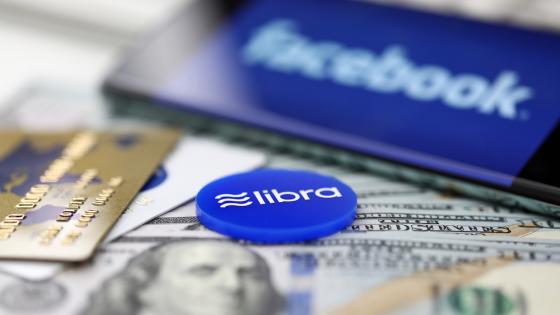This column is a lead commentary in the VoxEU Debate "The Future of Digital Money"
It’s back, “it” being Libra. Earlier this month, the Libra Association issued a new and improved White Paper updating its paper of June 2019. The authors now understand that their project is about more than technological solutions. It must also address economic and political concerns. That much, at least, is progress.
To this end, White Paper v2.0 replaces, or more precisely supplements, the original basket-based stablecoin with a set of single-currency stablecoins. More consequentially, it seeks to address a range of regulatory concerns (as voiced by, among others, Cecchetti and Schenholtz 2019). “Anyone,” including law enforcement, we are told, will be able to “audit the accuracy of all operations.” It is unclear whether this means that anyone will be able to verify the identify of the transactors and the purpose of the transaction (so much then for privacy) or not (so much then for cracking down on money laundering and terrorist finance). One suspects that the answer is the latter, since the White Paper also proposes a Financial Intelligence (FIU) Function to monitor the network and flag suspicious activity. Details to follow in White Paper v3.0.
We are told that the Libra Reserve, made up of cash and short-term securities that serve as stablecoin backing, will be held by a “geographically distributed network of well-capitalized custodian banks.” Only Designated Dealers (DDs) who “commit to making markets with tight spreads” will interface with both the Libra Association on one side and Libra users on the other. DDs, we are assured, will be “regulated, well-capitalized financial institutions.”
On the consumer-facing side, DDs will interact mainly with Virtual Asset Service Providers (VASPs), large entities that provide financial services to end users. VASPs will be regulated, although by whom is not clear, and will have to comply with the anti-money laundering and anti-terrorist finance requirements of the Financial Action Task Force, the relevant standard-setting body. While VASPs will be free of transaction and open-position limits, end users, holders of so-called “unhosted wallets”, will be subject to transaction-size ceilings. Someone, presumably the Libra Association, will hold a capital buffer to further buttress the system and protect end users. So far, so good.
But we come not to praise Libra but rather… (You can tell where this is going.) We see a number of unsolved problems.
Take-up problem solved, other problems not so much
First, the substitution of a set of single-currency stablecoins solves only one problem, that of take-up. Previously, it was not clear why a US resident transacting in dollars would prefer a basket-based unit, digital or not. Now the Libra Association plans to offer her a dollar-linked stablecoin, LibraUSD. This arrangement, where the US resident uses that digital unit in transactions intermediated by her VASP, differs from the wholesale version of a central bank digital currency (CBDC) only in that the Libra Association rather than the Fed would issue and burn the digital units.
The White Paper even moots the possibility, if a CBDC is issued, that the Association could replace the applicable single-currency stablecoin with the CBDC (on this see also Niepelt 2019). This implies that the VASPs will converge to none other than the same regulated commercial banks with which central banks will presumably open wholesale digital accounts.
But the addition of individual-currency stablecoins alongside the composite unit does nothing to address other concerns. These units can still circulate outside the country or countries to whose currencies they are linked. If residents of another country shift into LibraUSD, that country’s central bank will lose the ability to earn seigniorage. It will lose control of monetary conditions. It will lose the ability to backstop local financial markets.
What capital buffer exactly?
Second, the source and structure of the capital buffer is unclear. The White Paper states that the capital buffer will be supplemented by interest earned on the short-term treasury securities in the Reserve. The rest of the capital presumably will be subscribed by the members of the Libra Association, in return for a share of the fees earned on Libra Network transactions.
But will such fees provide a return commensurate with the size of the capital subscriptions needed for an adequate buffer? How will fees be shared between the Association members who subscribe the capital and the DDs and VASPs who execute the transactions? If fees are non-negligible, will Libra be able to compete with cash and debit cards?
There are still other questions about the capital buffer. Will it be adjusted countercyclically? Will it be set by the Libra Association or the central bank to which the single-currency stablecoin is pegged? Presumably the answer is: by the central bank, since countercyclical capital buffers are key macroprudential tools critical for financial stability.
The missing forward market
Third, the White Paper acknowledges that an ecosystem of Libra-related derivatives is likely to develop around its stablecoin. This seems to be what the authors mean when they anticipate the development of “smart contracts [that] allow participants to agree on more complex business logic…” (You can see that technologists and monetary economists still use different jargon.)
Actually, the key derivative instrument, which will be essential to the operation of the network, is entirely missing from the White Paper. We refer to a forward market in Libra stablecoins. Recall that DDs will be responsible for keeping the stablecoin stable. If the price of LibraUSD rises above $1 – if LibraUSD appreciates – it is the dealer’s role to deposit $1 with the Libra Network and sell that additional LibraUSD into the secondary market, earning a profit on the transaction and driving the price back down toward $1.
But the dealer’s ability to execute these arbitrage transactions is limited by its own reserves of dollars, which are finite. For dealers to perform this function smoothly, there will have to be a forward market. Again, suppose that the price of LibraUSD on the spot market rises, say to $S, where S>1. The dealer can then sell LibraUSD on the spot market for $S and buy it back at the forward price F tomorrow. Assuming that the forward is priced at $1, this forward-spot arbitrage pushes the price back toward $1. (We are also assuming that interest rates are zero without loss of generality.)
Crucially, the existence of this forward market also enables non-dealers to conduct peg-stabilizing arbitrage, which they would be unable to do otherwise. In this set-up, the spot rate will never diverge from $1, assuming of course that F is $1, which is the rational expectation if arbitrage capital is ample and the Reserve is solid.
The missing lender of last resort
But if a forward market and other derivatives markets solve one problem, they create another: who serves as Libra lender of last resort? When something goes wrong in US derivatives markets, the Federal Reserve steps in, providing emergency liquidity, as we have seen so dramatically in the last month. But if something goes wrong in the market for a widely traded and widely held LibraUSD smart contract, will the Fed be able to do the same under the provisions of Section 13(3) of the Federal Reserve Act? Will it do so willingly?
White Paper v2.0 alludes to this issue. It is worth quoting the relevant passage. “If extreme circumstances occur and Designated Dealers no longer make markets in Libra Coins, Libra Networks will call on a pre-existing arrangement with a third-party administrator or dealer to assist, in an administrative capacity, in burning Libra Coins for end users and liquidating assets comprising the Reserve to make payment as appropriate. These emergency operations will always be implemented under the guidance of the relevant regulators.”
If we’re talking about the failure of an individual DD, then the “third-party administrator” could be another DD or a member of the Libra Association. But if we’re talking about the illiquidity or insolvency of DDs as a class, are we talking about the Federal Reserve?
Evidently, the authors of the White Paper have doubts about whether the Fed will be a compliant lender of last resort to the market in LibraUSD. In the event of a run on the Reserve, they suggest that rather than forcing the Libra Network to convert its securities into cash and incur fire-sale losses, the Libra Network might adopt redemption stays (delays in providing cash) and early redemption haircuts (additional fees for redemption).
Financial historians will recognise these devices for what they are. They resemble the clearinghouse certificates issued by bank groups in the US in the 19th century in response to bank runs and financial crises. This practice created a situation where not every dollar was as good as every other dollar. It was this unsatisfactory state of affairs that led to the establishment of the Federal Reserve System in 1913.
References
Cecchetti, S and K Schoenholtz (2019), “Libra: A Dramatic Call to Action,” VoxEU.org, 28 August.
Niepelt, D (2019), “Libra Paves the Way for Central Bank Digital Currency,” VoxEU.org, 12 September.



